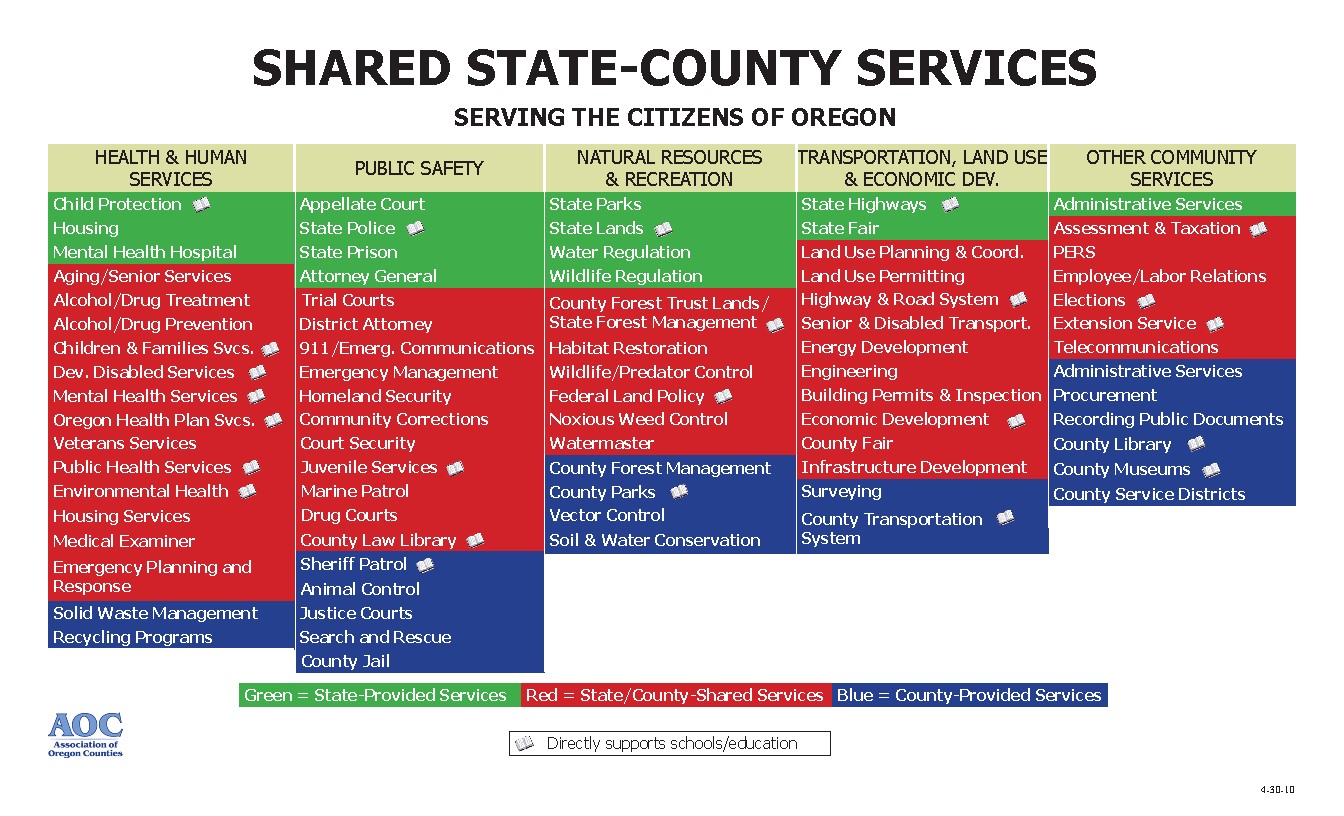 What Are The Basic County Functions?
What Are The Basic County Functions?

 What Are The Basic County Functions?
What Are The Basic County Functions?

The "County" is the State Legislature's reach into all the geographic areas within Oregon using a from that originated in Europe. Originally, the King sent someone to enforced the collection of taxes and to maintain 'law and order'. Think of the "Shire Representative" of the King that in the old language was "Shire Reeve" and finally "Sheriff". The lands were divided up into "domains of the count or earl" eventually being called "County". So the Sheriff covered a single County often working with/under the Count. There were problems with the early Sheriffs resulting in people demanding oversight by an impartial Judge. This Judge would travel around the County resolving legal disputes using the Sheriff as its enforcement arm. Next the citizens in some nations demanded to be the ones selecting the County administration, the Judge, anor the Sheriff. The citizens of Oregon enjoy electing all three as well as many other County level officials such as tax assessor, recording clerk, etc... Today's "County" system is tasked with public safety, property tax collection, election vote counting, land use management, health services, public infrastructure, and other programs of interest to the State to which the citizens often have added additional functions.
The people added Districts to manage community functions such as a Town District, Library District, Utility District, School District, Ambulance District, and so on. Each of the Districts can be thought of as an independent managing organization responsible for specific functions over a geographic area and overseen by a Board of Directors/Commissioners/etc. elected by those within that District. Responsibilities may not overlap; so when an area establishes a "Fire District", the County's Fire responsibility is in part or whole transferred to the new "District". Effectively, the County can be considered just another Tax District with specific separate State-focused duties. There is no requirement for districts to be contained within any geographic area other than the state of Oregon. For instance, a school district can extend into several county districts. Functions can be created or even transferred from other Districts by the approval of the electorate affected. Counties have adding all sorts of optional social programs, set up fairgrounds and event/sports centers, operate various business enterprises, and in general far exceed their basic legal obligations. The Association of Oregon Counties created a simple table showing the common County/State individual/shared functions.

County administration takes one of three forms: "County Court" with a judge (parttime paid) and two commissioners, "Board of County Commissioners" with three commissioners, and "Home Rule Charter" with a Board of County Commissioners of a number specified by its Charter. Siuslaw County would start as a "County Court" with the judge having the default duties of misdemeanors and probate. Many counties that transferred the judicial responsibilities (misdemeanor/probate) to the State voiced their regret in the loss of local control over how their troubled youths and minor offenders were treated. The rest of the County administration would be with the traditional fulltime Administrator. Lane County is one of nine with Home Rule Charters, it has a population of 350,000 plus, its the size of Connecticut; and needs its huge, overbearing, and easily corrupted bureaucracy. Lane County has five paid commissioners plus a fulltime administrator costing 1,000,000$ (million) per year plus 1600 full time equivalent employees. Siuslaw County only needs one parttime elected judge, two elected volunteer commissioners, and a fulltime paid administrator over 50 employees able to be an efficient and smaller organization avoiding big government's wasteful extra programs.